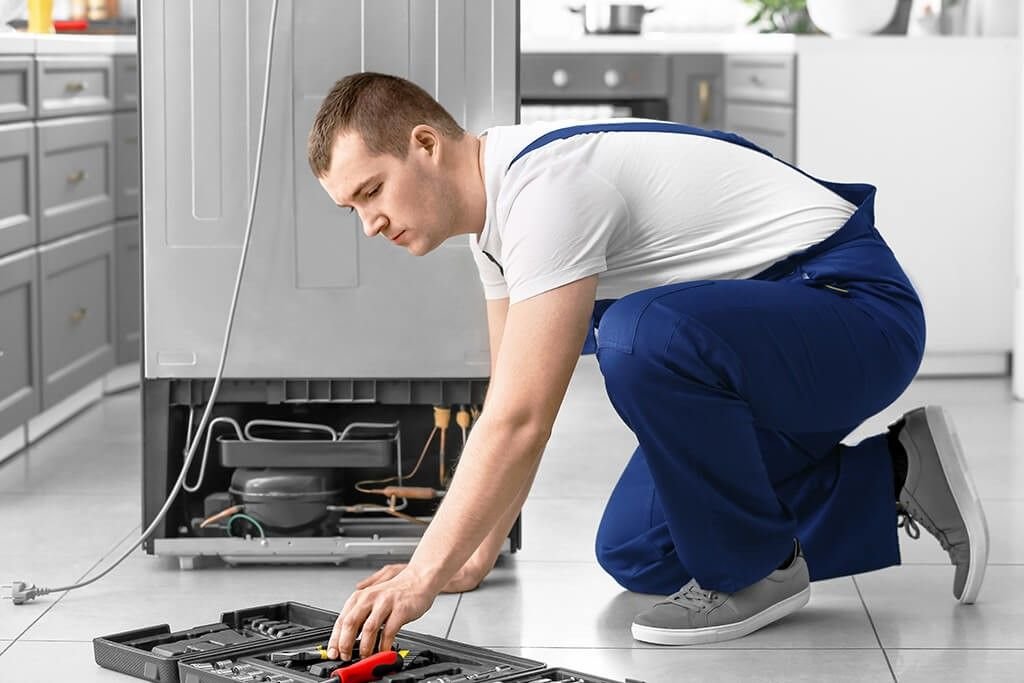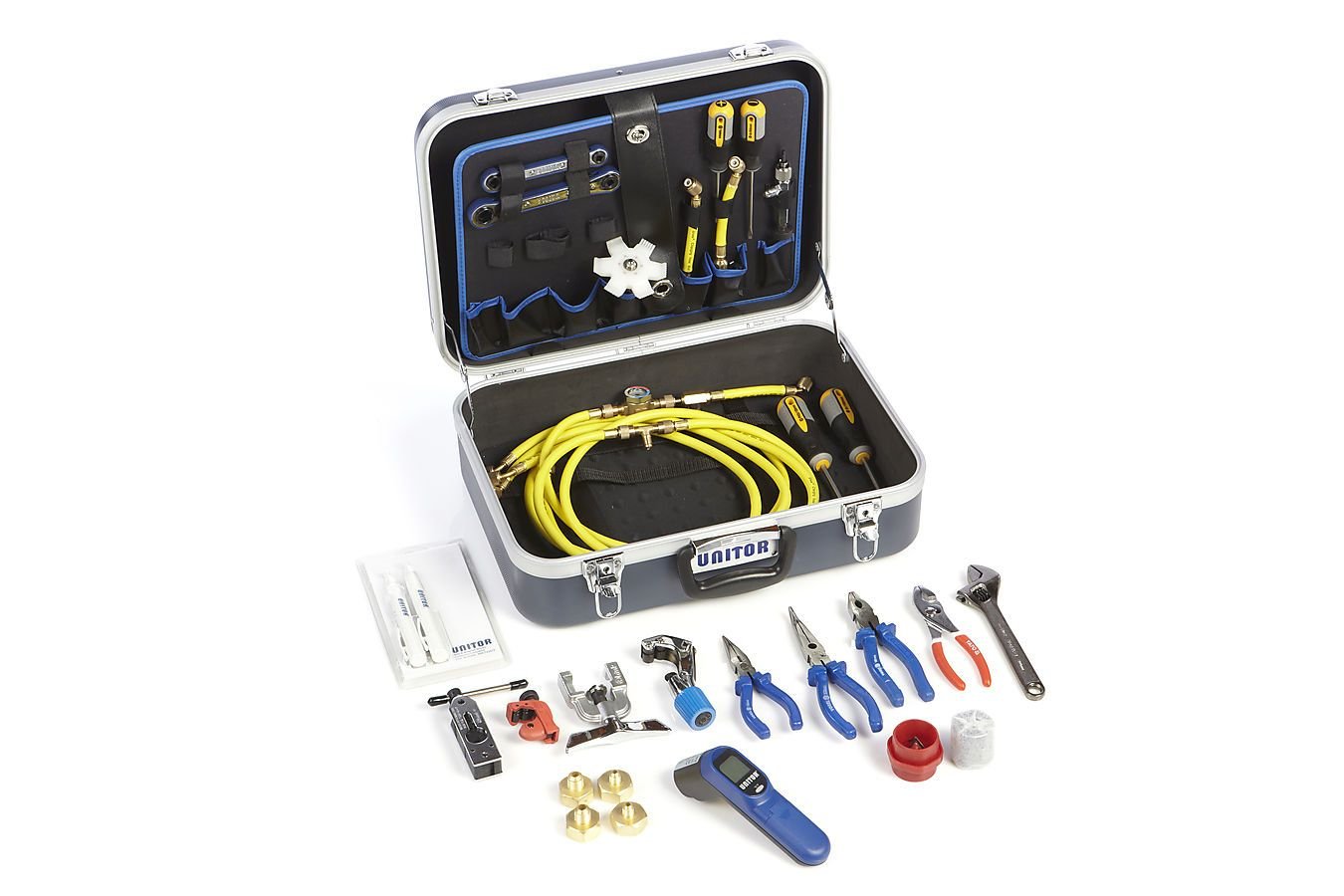Keeping your refrigerator in top shape is essential for maintaining fresh food and avoiding unnecessary repairs. Early diagnosis of refrigerator problems can save you time, money, and a lot of hassle. Understanding common issues and how to troubleshoot them can empower you to handle minor problems on your own and know when it’s time to call for help.
This guide is designed to assist beginners in identifying and addressing basic refrigerator problems. We’ll walk you through some of the most frequent issues and provide straightforward steps to diagnose them. With a little knowledge, you can ensure your fridge keeps running smoothly and efficiently.
Understanding Basic Refrigerator Components
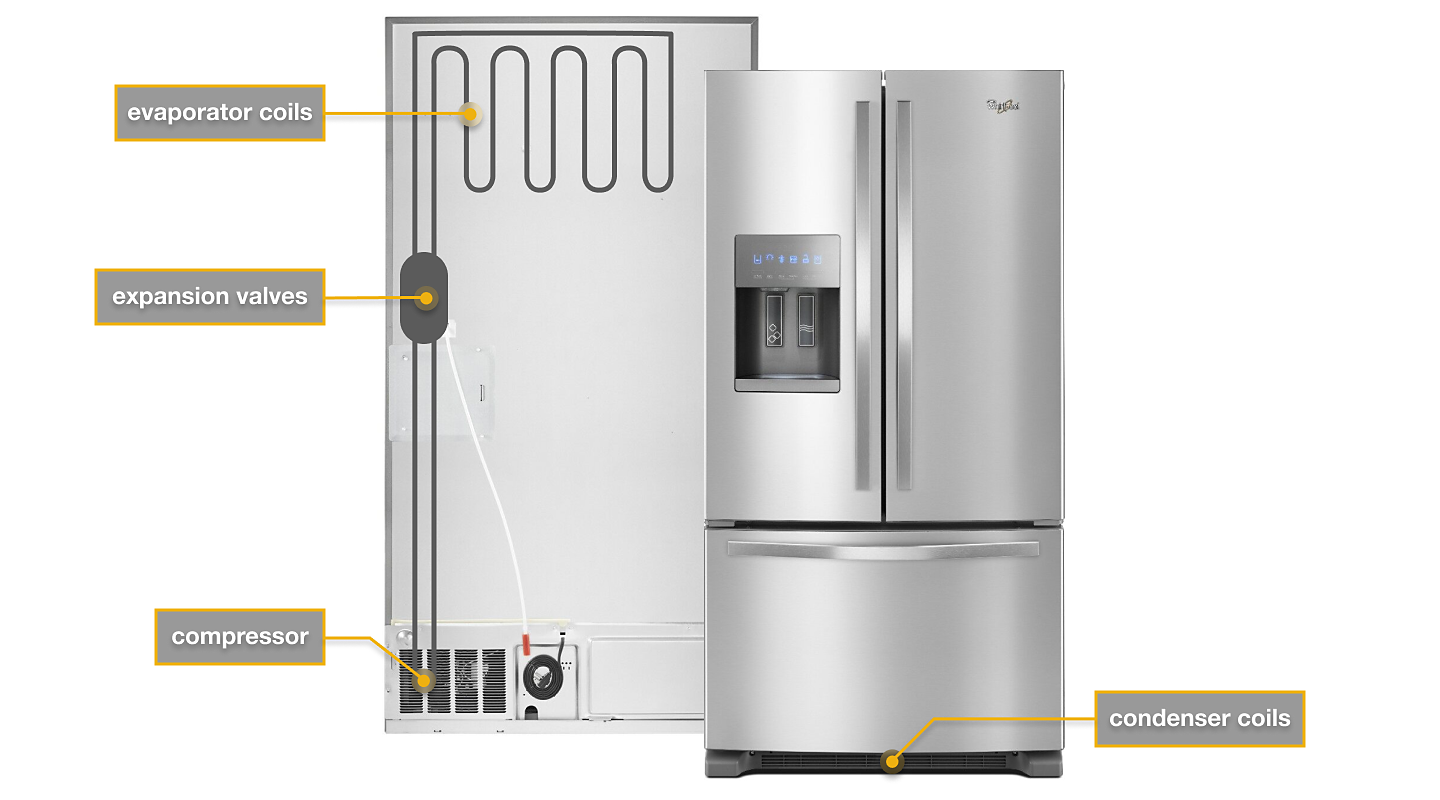
To troubleshoot refrigerator problems effectively, it’s helpful to know how your fridge works. Here’s a quick look at the key components that keep your refrigerator running:
- Compressor: Often considered the heart of the refrigerator, the compressor circulates refrigerant through the system. It compresses the refrigerant gas, allowing it to release heat and cool down the refrigerator’s interior.
- Evaporator Coils: These coils are located inside the refrigerator and absorb heat from the interior, helping to keep things cool. As the refrigerant flows through these coils, it evaporates, taking heat with it.
- Condenser Coils: Located on the back or underneath the fridge, the condenser coils release the heat absorbed by the refrigerant. Keeping these coils clean helps maintain efficiency.
- Thermostat: This component regulates the temperature inside the refrigerator by turning the compressor on and off based on the current temperature setting.
- Fan: The fan helps circulate air inside the refrigerator and freezer compartments, ensuring even cooling throughout.
Common Refrigerator Problems and How to Diagnose Them
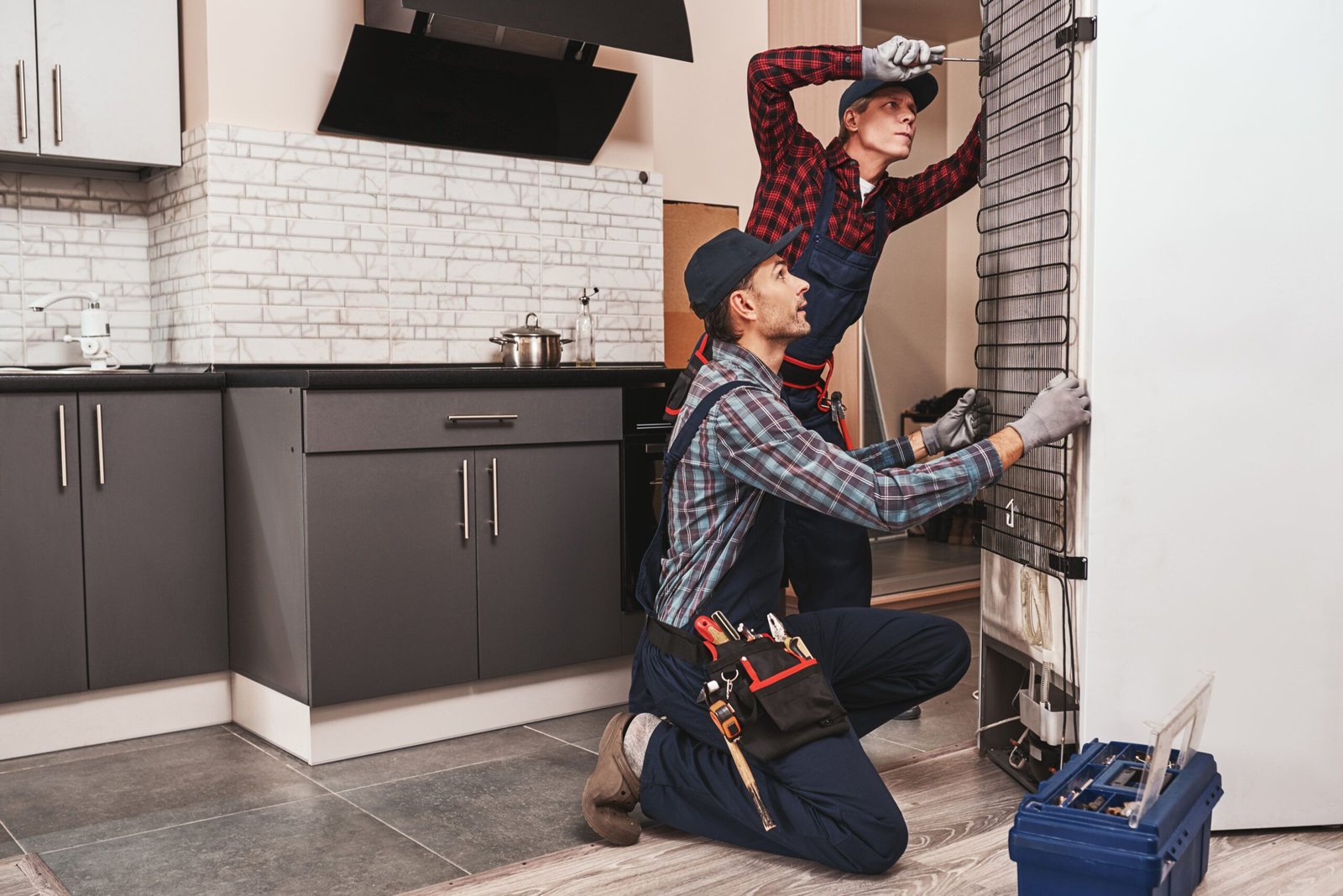
Refrigerators can encounter a variety of issues that impact their performance. Here’s a beginner-friendly guide to diagnosing some of the most common refrigerator problems:
- The Refrigerator Isn’t Cooling Properly
- Possible Causes:
- Thermostat Settings: Incorrect settings can prevent your fridge from reaching the desired temperature.
- Dirty Condenser Coils: Dust and grime on the coils can reduce cooling efficiency.
- Faulty Evaporator Fan: If the fan isn’t working properly, the air won’t circulate effectively.
- Diagnostic Steps:
- Check and Adjust Thermostat Settings: Ensure the thermostat is set to the correct temperature, typically between 35-38°F.
- Inspect and Clean Condenser Coils: Vacuum or brush off any dust or debris from the coils, usually located at the back or underneath the fridge.
- Listen for Fan Noises: Check if the evaporator fan is running. If it’s not, it may need to be replaced.
- The Refrigerator Is Too Cold
- Possible Causes:
- Thermostat Settings: The thermostat may be set too low.
- Malfunctioning Defrost Heater: If the defrost heater isn’t working, it can cause the fridge to become too cold.
- Diagnostic Steps:
- Adjust the Thermostat: Set the thermostat to a slightly higher temperature and monitor if the issue persists.
- Test the Defrost Heater: Check if the heater is functioning properly, or consider replacing it if it’s faulty.
- The Refrigerator Is Making Strange Noises
- Possible Causes:
- Faulty Evaporator Fan: A malfunctioning fan can create unusual noises.
- Ice Buildup in the Fan: Ice can obstruct the fan, causing noise.
- Compressor Issues: The compressor can sometimes produce loud or unusual sounds.
- Diagnostic Steps:
- Check and Clean the Evaporator Fan: Inspect the fan for ice buildup and clean or replace it as needed.
- Inspect for Ice Buildup: If you find ice, defrost the area and check if the noise continues.
- Listen for Compressor Noises: If the compressor is making excessive noise, it might need professional attention.
- The Refrigerator Is Leaking Water
- Possible Causes:
- Blocked Defrost Drain: A clogged drain can cause water to pool inside the fridge.
- Faulty Water Supply Line: Leaks from the water supply line can result in water on the floor.
- Diagnostic Steps:
- Locate and Clear the Defrost Drain: Find the drain, usually at the bottom of the fridge, and remove any blockages.
- Inspect the Water Supply Line: Check for leaks or loose connections and tighten or replace the line if necessary.
- The Refrigerator Light Is Out
- Possible Causes:
- Burnt-Out Bulb: The most common cause of a light that won’t turn on.
- Faulty Door Switch: If the switch isn’t working, the light may not turn on when the door is opened.
- Diagnostic Steps:
- Replace the Bulb: Swap out the old bulb for a new one to see if that resolves the issue.
- Check and Test the Door Switch: Ensure the switch is functioning correctly; replace it if necessary.
By following these diagnostic steps, you can tackle common refrigerator issues and potentially resolve them without needing a professional. If you find that the problem persists or seems beyond your expertise, it’s always a good idea to consult a professional for help.
Basic Tools and Safety Tips
When diagnosing refrigerator issues, having the right tools and following safety precautions are essential. Here’s a quick guide to help you get started:
- Recommended Tools for Basic Diagnostics:
- Multimeter: Useful for checking electrical components like thermostats and fans for continuity and proper function.
- Screwdrivers: A set of screwdrivers, including flathead and Phillips, will help you access various parts of the refrigerator.
- Vacuum Cleaner: Ideal for cleaning dust and debris from the condenser coils, which is crucial for maintaining efficient cooling.
- Safety Precautions:
- Unplug the Refrigerator: Always disconnect the power before inspecting or repairing any part of the refrigerator to avoid electrical shocks.
- Avoid Electrical Hazards: Be cautious when working with electrical components. Ensure your hands and tools are dry, and avoid touching exposed wires or connections.
When to Call a Professional
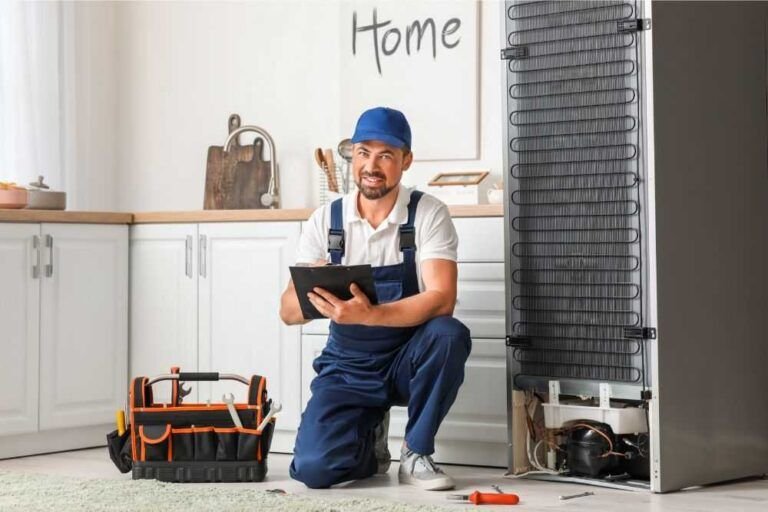
While DIY repairs can be effective for minor issues, some situations require the expertise of a professional. Here’s when you should consider seeking help:
- Signs That Indicate a Need for Professional Help:
- Persistent Issues: If problems continue despite your troubleshooting efforts, it might be time for a professional evaluation.
- Complex Repairs: Issues involving the compressor, refrigerant lines, or major electrical components often require specialized knowledge and tools.
- Safety Concerns: If you encounter potential safety hazards, such as gas leaks or severe electrical problems, it’s best to leave the repair to a professional.
- Benefits of Professional Diagnosis and Repair:
- Expertise and Experience: Professionals have the training and experience to diagnose and fix complex issues accurately.
- Specialized Tools: They use advanced tools and equipment that may not be available to the average homeowner.
- Warranty and Assurance: Many professional services offer warranties on their work, providing peace of mind and ensuring that repairs are done correctly.
Preventative Maintenance Tips

Keeping your refrigerator in top condition can help you avoid many common issues and extend its lifespan. Here are some essential maintenance tips to ensure your refrigerator continues to run smoothly:
- Regular Cleaning and Maintenance:
- Clean Condenser Coils: Dust and dirt on the coils can reduce efficiency. Clean them every 6-12 months using a vacuum or coil brush.
- Check and Replace Door Seals: Ensure door seals are airtight to prevent cold air from escaping. Clean the seals regularly and replace them if they become damaged or worn.
- Defrost the Freezer: If you have a manual defrost model, defrost it regularly to prevent ice buildup, which can affect performance.
- Tips for Keeping Your Refrigerator in Good Working Order:
- Monitor Temperature Settings: Keep your refrigerator at 35-38°F and your freezer at 0°F. Use a thermometer to ensure accurate readings.
- Organize Your Food: Avoid overloading the fridge to ensure proper air circulation. Store food properly to prevent spoilage and maintain efficiency.
- Inspect and Clear Drains: Regularly check the defrost drain for blockages and clear them to prevent water pooling inside the refrigerator.
Conclusion
Diagnosing and addressing refrigerator problems early can save you time, money, and stress. By understanding common issues and following the diagnostic steps outlined, you can tackle many problems yourself. However, if you encounter persistent or complex issues, don’t hesitate to seek professional help to ensure a proper and safe repair.
For expert refrigerator repair services and professional assistance with complex issues, contact SmartFix. Our team of skilled technicians is ready to help you keep your refrigerator running efficiently and effectively. Reach out today for reliable and top-notch repair solutions!
